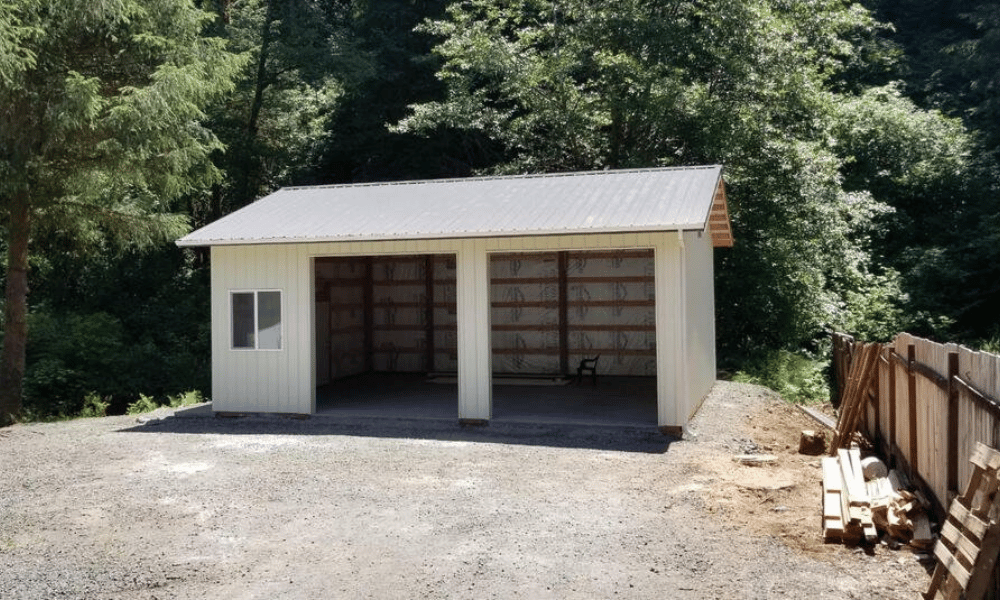Introduction
Building a garage is more than just throwing up some walls and roofing; it involves navigating a maze of regulations and codes that ensure safety, efficiency, and compliance with community standards. Whether you're looking into a conventional garage or a Pole Barn Garage, understanding building codes is crucial. These codes can dictate everything from the design and materials to the placement and construction methods. In this comprehensive guide, we'll dive deep into the various building codes applicable to both traditional and pole barn garages.
Understanding Building Codes for Both Types of Garages
When embarking on a garage construction Pole Barn Garage Builders in Springfield project, it's essential to grasp what building codes entail. Building codes are sets of regulations established by local governments to ensure public safety, health, and welfare in building construction. They cover numerous aspects including structural integrity, fire safety, electrical systems, plumbing, and energy efficiency.
Why Are Building Codes Important?
- Safety: Building codes safeguard occupants and neighboring properties. Legal Compliance: Ensures you adhere to local laws to avoid fines or penalties. Insurance Requirements: Some insurance policies require compliance with local building codes. Resale Value: Properties built according to code usually have higher market values.
Types of Building Codes
National Codes: Such as the International Building Code (IBC), which many states adopt. Local Codes: Customized regulations that reflect the specific needs of communities. Zoning Codes: These determine where structures can be built within urban planning guidelines.Differences Between Conventional Garage and Pole Barn Garage
What is a Conventional Garage?
A conventional garage typically features standard framing techniques using wood or metal studs and is often attached or detached from your home. They usually come with a foundation, insulation, drywall, and may include electrical wiring.
What is a Pole Barn Garage?
On the other hand, a pole barn garage utilizes large poles as its primary structural supports instead of traditional framing. This approach allows for larger open spaces without needing internal support beams.
Building Code Considerations for Conventional Garages
In most jurisdictions, conventional garages must adhere to strict guidelines regarding:
- Foundation requirements: Usually requires poured concrete footings. Height restrictions: Local zoning laws may limit how tall your structure can be.
Building Code Considerations for Pole Barn Garages
For pole barn garages, considerations include:
- Post spacing: Typically spaced further apart than traditional stud framing. Roof load calculations: Must account for snow loads in colder climates.
Licenses and Permits Required for Garage Construction
Regardless of the type of garage you choose to build—whether it's conventional or a pole barn—obtaining the necessary permits is vital.
Types of Permits You May Need
Building Permit: Required if your project meets certain size criteria. Electrical Permit: Needed if you plan on adding electric outlets or lights. Plumbing Permit: Required if installing sinks or drainage systems.Key Building Code Regulations for Garages
Structural Integrity Requirements
Both types of garages must meet structural integrity regulations that ensure they can withstand environmental loads like wind pressure or snow accumulation.
Load-Bearing Walls
In both conventional and pole barn garages, any load-bearing walls must be correctly identified and constructed using materials that meet local code specifications.
Fire Safety Regulations
Fire safety isn’t something to take lightly; it’s crucial for protecting lives as well as property.
Fire Separation
Many regions require fire separation between garages and living spaces in homes to prevent fire spread.
Energy Efficiency Standards in Garage Construction
With rising energy costs and environmental awareness, energy efficiency has become an integral part of building codes.
Insulation Requirements
Proper insulation not only saves money but also contributes positively towards energy conservation efforts mandated by building codes.
Compliance with Energy Codes
Ensure that your construction meets local energy efficiency guidelines such as those outlined in the International Energy Conservation Code (IECC).

Accessibility Standards for Garages
Accessibility might not always be at the forefront of one’s mind when designing a garage; however, these standards are increasingly gaining importance due to legal requirements under legislation like the Americans with Disabilities Act (ADA).
Accessible Features
Consider incorporating features like wider doors or ramps which might not only comply with regulations but also enhance usability for everyone.
FAQ Section
1. What are building codes?
Building codes are regulations set by government entities that dictate how structures should be constructed to ensure safety and integrity.
2. Do I need a permit for my garage?
Yes! Most regions require permits for any new construction projects above a certain size threshold.
3. Are there different codes for different types of garages?
Yes! Different types such as conventional garages and pole barn garages may have varying code requirements based on their designs.
4. How do I find out about local building codes?
You can check with your local government office or their website where they post information regarding zoning laws and building regulations.
5. What happens if I don’t comply with building codes?
Failing Coburg pole barn garage options to comply can lead to fines, required demolitions, or issues when trying to sell your property later on.
6. Can I build my own garage without hiring a contractor?
While DIY builds are possible, it’s important to understand all local regulations thoroughly before proceeding without professional help.
Conclusion
Navigating through the intricacies of building codes can feel overwhelming at first glance; however, understanding them is fundamental whether you're opting for a traditional garage or exploring the unique benefits offered by a pole barn garage structure. The goal always remains clear — ensuring safety while maximizing functionality and aesthetics in your new space!
So before hammering that first nail or pouring that slab foundation, make sure you’ve got all bases covered when it comes to “Understanding Building Codes for Both Types of Garages.” After all, compliance doesn’t just protect you; it adds value both now and long-term!